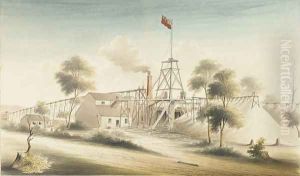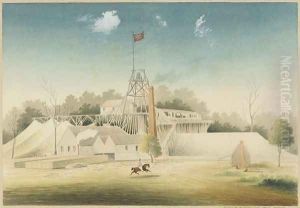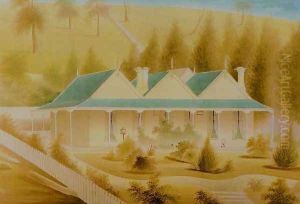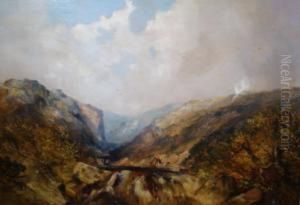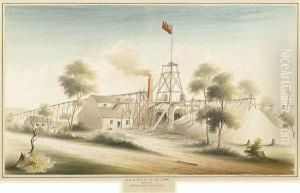William Tibbits Paintings
William Tibbits was an Australian artist, recognized for his contributions to Australian art, particularly during the 19th century. Born in 1833 in London, England, Tibbits moved to Australia in the mid-19th century, where he would go on to make a significant impact on the local art scene.
Tibbits's early life and education remain somewhat obscure, but it is known that upon his arrival in Australia, he quickly became involved in the art community. He was particularly active in Victoria, a region that was experiencing a cultural boom due to the wealth generated by the gold rush era. Tibbits's work during this period was characterized by his landscapes and portraits, which he often exhibited at various art shows and institutions. His style was influenced by European art movements of the time but also displayed a distinct Australian sensibility, capturing the unique light and atmosphere of the Australian landscape.
Throughout his career, Tibbits was associated with several art societies and was a founding member of the Victorian Academy of Arts. He played a role in fostering a vibrant artistic environment in Melbourne and was a contemporary of other important Australian artists of the period. His paintings were well-received, and he was known for his technical skill and attention to detail.
Tibbits's contribution extended beyond painting; he was also involved in art education, teaching at institutions such as the National Gallery of Victoria Art School. His influence was felt by a generation of Australian artists who would come to define the visual arts in the country.
William Tibbits passed away in 1905, leaving behind a legacy as one of the prominent figures in Australian art during a pivotal period of cultural development. His works continue to be appreciated for their historical value and their representation of 19th-century Australian life and landscapes.
